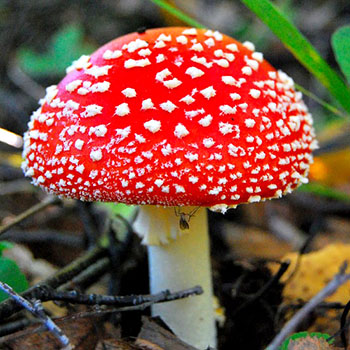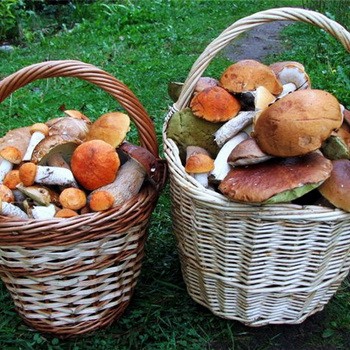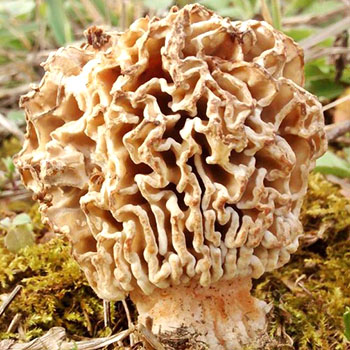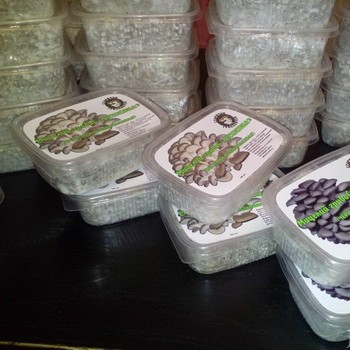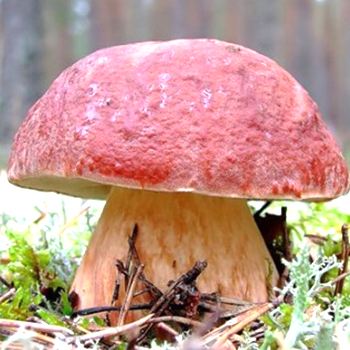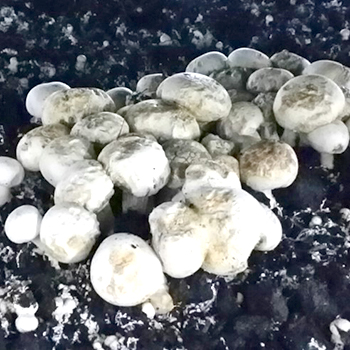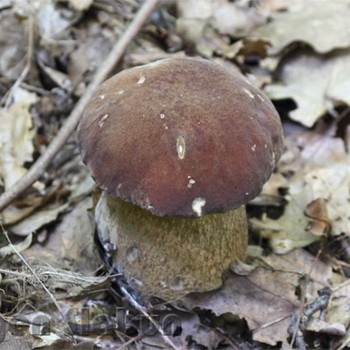The structure, development and nutrition of mushrooms: main features
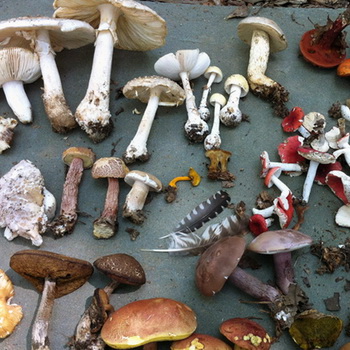
A description of the structure of mushrooms, as well as the main features of their development and nutrition, are presented in detail in this article.
Content
General characteristics of the structure of the mycelium of the fungus
All mushrooms have a vegetative body called mycelium, i.e., mycelium. The external structure of the mycelium of fungi resembles a bunch of thin writhing threads, called “hyphae”. As a rule, the mycelium of common edible fungi develops in the soil or on decaying wood, and the mycelium of parasites grows in the tissues of the host plant. Mushroom fruiting bodies grow on the mycelium with spores by which fungi multiply. However, there are a large number of fungi, in particular parasitic ones, without fruiting bodies. The peculiarity of the structure of such fungi is that their spores grow directly on the mycelium, on special spore-bearing plants.
The young mycelium of oyster mushroom, champignon and other cultivated mushrooms is a thin white thread that looks like a white, gray-white or white-blue coating on a substrate that resembles a web.
The structure of the mycelium of the fungus is shown in this diagram:
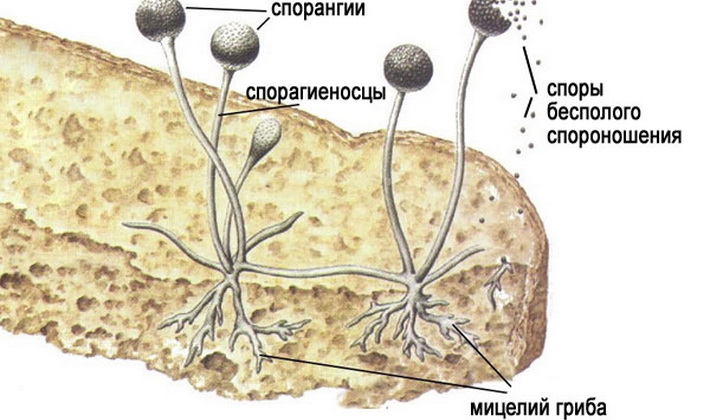
In the process of maturation, the shade of the mycelium becomes creamy and small cords of interwoven threads appear on it. If during the development of the acquired mycelium of mushrooms (in a glass jar or bag) on the surface of the substrate (grain or compost may play its role), the strands are approximately 25-30% (installed on the eye), this means that the planting material was of high quality. The smaller the strands and the lighter the mycelium, the younger and usually more productive. Such mycelium will take root without problems and will develop in the substrate in greenhouses and greenhouses.
Speaking about the structure of the fungus, it is important to note that the rate of growth and development of oyster mushroom mycelium is much higher than that of champignon mushrooms. In oyster mushroom, planting material after a short time becomes yellowish and with a lot of strands.
This figure shows the structure of oyster mushroom:
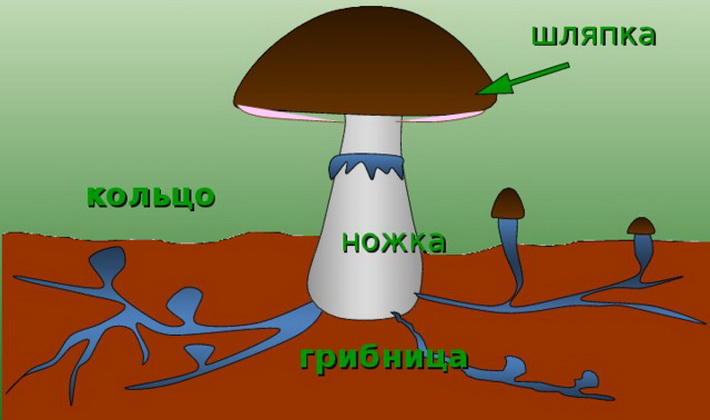
The creamy shade of oyster mushroom mycelium does not at all indicate low quality. However, if the threads and strands are brown in color with brown drops of liquid on their surface or on a container with mycelium, this is a sign that the mycelium has grown, grown old or come under the influence of adverse factors (for example, it was frostbitten or overheated). In this case, do not count on a good survival of planting material and on the crop.
These signs will help determine how the mycelium grows in the substrate.The formation of cords in the general structure of the fungus indicates the readiness of the mycelium to bear fruit.
If there are spots of pink or yellow, green, black colors in the container with mycelium or in the seeded substrate (on the bed, in the box, in the plastic bag), it can be said with certainty that the substrate is moldy, in other words, covered with microscopic fungi, a kind of " competitors ”cultivated champignons and oyster mushrooms.
If the mycelium is infected, then it is not suitable for planting. If the substrate is infected after planting mycelium, the infected areas are carefully removed and replaced with a fresh substrate.
Next, you will learn what are the structural features of the spore of the fungus.
The structure of the fruiting body of the fungus: form and characteristics of spores
Although the most famous is the structural form of the fruit body of the fungus in the form of a cap on the stem, it is far from the only one and is only one of many examples of natural diversity.
In nature, you can often see fruiting bodies that look like a hoof. Such are, for example, among polypore growers that grow on trees. The coral-shaped form is characteristic of horned mushrooms. In marsupials, the shape of the fruit body is similar to a bowl or glass. The shapes of the fruiting bodies are very diverse and unusual, and the color is so rich that it is sometimes difficult to describe mushrooms.
To better understand the structure of the fungus, see these figures and diagrams:
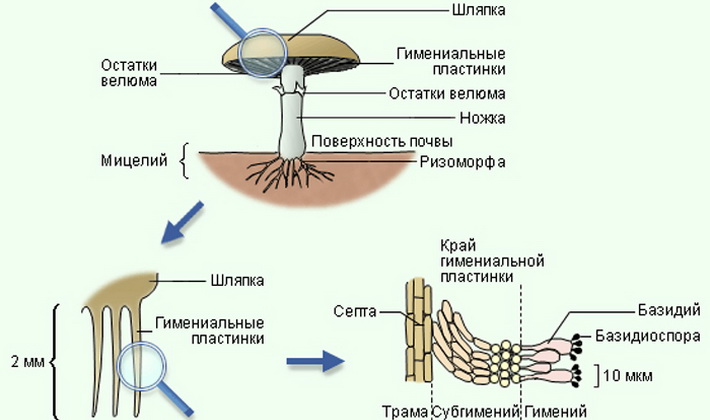
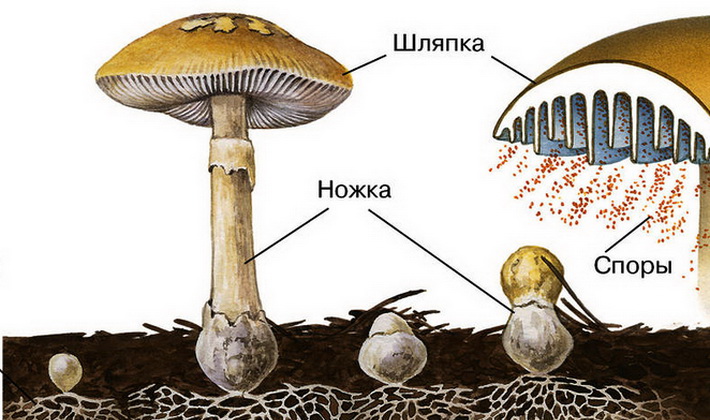
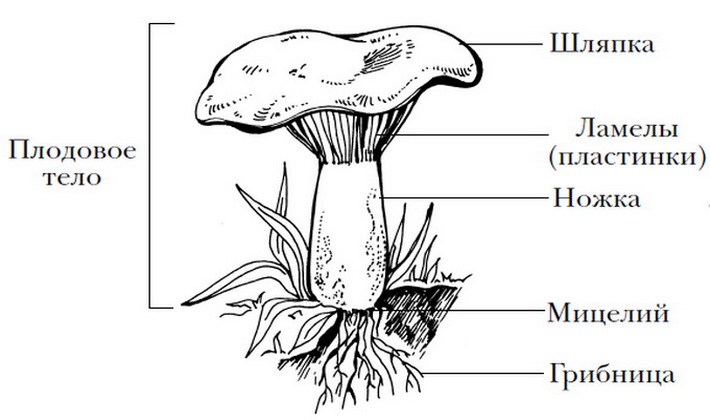
Fruit bodies contain spores, with the help of which fungi propagate inside and on the surface of these bodies, on plates, tubes, spines (cap mushrooms) or in special chambers (raincoats).
The spore form in the structure of the fungus is oval or spherical. Their sizes range from 0.003 mm to 0.02 mm. If we examine the structure of the fungal spores under a microscope, then droplets of oil will be visible, which are a reserve nutrient designed to facilitate spore germination in the mycelium.
Here you can see a photo of the structure of the fruit body of the fungus:
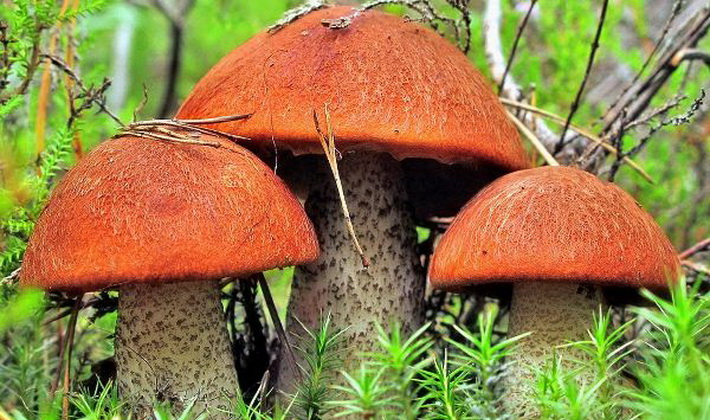
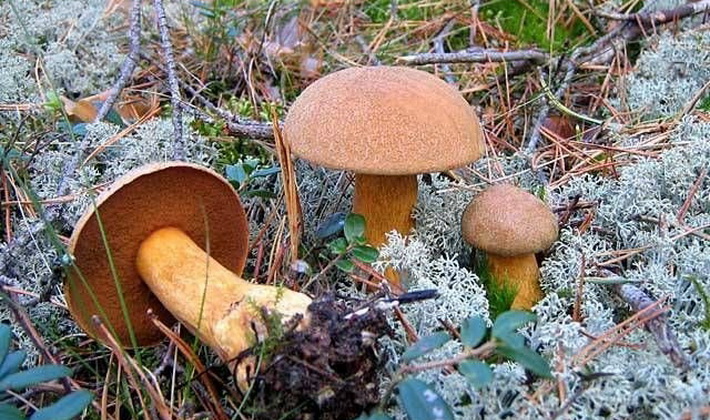
The color of spores can be different, ranging from white and ocher-brown to purple and black. The color is set on the plates of an adult mushroom. Russula is characterized by white plates and spores, in champignons they are brown-violet, and in the process of ripening and an increase in the number of plates, their color changes from pale pink to dark purple.
Thanks to such a sufficiently effective method of propagation as spreading billions of spores, mushrooms have been unsuccessfully solving the issue of procreation for more than a million years. As the famous biologist and geneticist, Professor A. S. Serebrovsky, figuratively expressed himself in his “Biological walks”: “After all, every autumn the red heads of fly agarics appear here and there from under the ground and, shouting with their scarlet color:“ Hey, come on in, don't touch me, I’m poisonous! ”millions of their insignificant spores scatter in the still autumn air. And who knows how many millennia these mushrooms have kept their fly agaric with the help of spores, since they so radically solved the greatest of life's problems ... ”
In fact, the amount of spores released into the air by the fungus is simply enormous. For example, a small dung beetle with a hat with a diameter of only 2-6 cm produces 100-106 spores, and a large enough mushroom with a hat with a diameter of 6-15 cm throws 5200-106 spores. If we imagine that all this volume of spores sprouted and prolific bodies appeared, then a colony of new mushrooms would occupy a territory of 124 km2.
Compared with the number of spores produced by a flat tinder fungus with a diameter of 25-30 cm, these figures fade, since it reaches 30 billion, and in rainwater mushrooms, the number of spores is difficult and it is not for nothing that these fungi are among the most prolific organisms on earth.
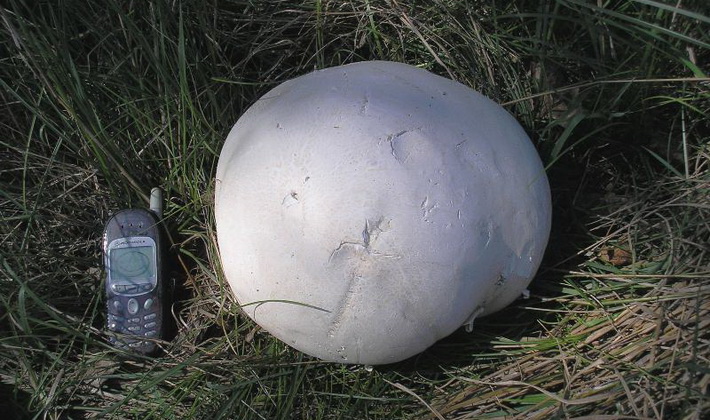
A giant mushroom called Langermannia is often close in size to a watermelon and produces up to 7.5 trillion spores. Even in a nightmare one cannot imagine what would happen if they all sprouted.Appearing mushrooms would cover the territory exceeding the territory of Japan. We give free rein to imagination and imagine what would happen if the spores of this second generation of mushrooms sprouted. Fruit bodies in volume would be 300 times larger than the volume of the Earth.
Fortunately, nature made sure that fungal overpopulation did not happen. This fungus is extremely rare and therefore a small number of its spores find those conditions in which they could survive and germinate.
Disputes fly in the air anywhere in the world. In some places there are fewer of them, for example, in the region of the poles or above the ocean, but there is no place where they do not exist at all. This factor should be taken into account and structural features of the fungus body should be taken into account, especially when breeding oyster mushrooms indoors. When the mushrooms begin to bear fruit, then collecting and caring for them (watering, cleaning the room) must be done in a respirator or, at least, in a gauze bandage covering the mouth and nose, as its spores can cause allergies in sensitive people.
You can not be afraid of such a threat if you grow champignons, donuts, winter mushrooms, summer mushrooms, since their plates are covered with a thin film called a private veil until the fruit body has fully ripened. When the mushroom ripens, the coverlet breaks, and from it there is only a trace on the leg in the form of a ring, and spores are thrown into the air. However, with such a development of events, the dispute is still less, and they are not so dangerous in the sense of causing an allergic reaction. In addition, the harvest of such mushrooms is harvested before the film is completely torn (while the commercial quality of the products is significantly higher).
As shown in the picture of the structure of oyster mushrooms, they do not have a private bedspread:
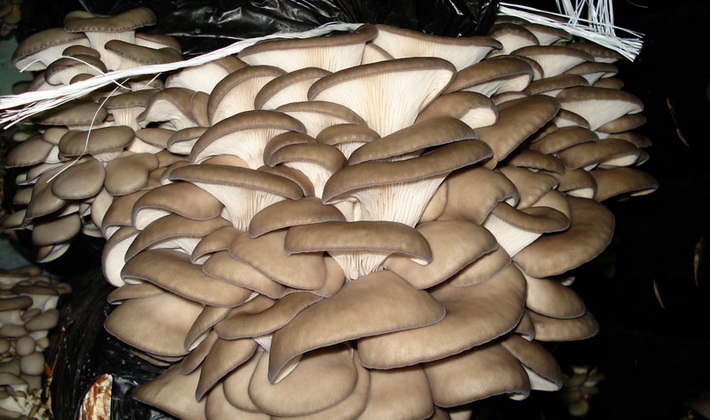
Because of this, spores in oyster mushrooms form immediately after the formation of the plates and are released into the air throughout the growth of the fruiting body, starting from the appearance of the plates and ending with the complete ripening and harvesting (this usually happens 5-6 days after the primordium of the fruiting body will form).
It turns out that the spores of this fungus are constantly present in the air. In this regard, a tip: 15-30 minutes before harvesting, you should slightly humidify the air in the room using a spray gun (water should not get on the mushrooms). Together with droplets of liquid, spores will settle on the ground.
Now that you’ve become familiar with the characteristics of the structure of mushrooms, it’s time to learn about the basic conditions for their development.
The main conditions for the development of mushrooms
From the moment of the formation of primordia until maturity, the growth of the fruiting body usually takes no more than 10-14 days, of course, under favorable conditions: normal temperature and humidity of the soil and air.
If we recall other types of crops grown in the country, then from strawberries from flowering to full ripening in central Russia, it takes about 1.5 months, in early varieties of apples - about 2 months, in winter this time reaches 4 months.
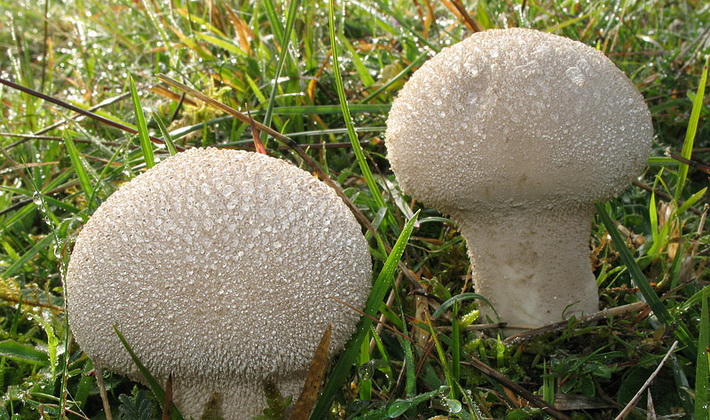
In two weeks, cap mushrooms fully develop, while raincoats can grow up to 50 cm in diameter or more. There are several reasons for this rapid cycle of mushroom development.
On the one hand, in favorable weather, it can be explained by the fact that on the mycelium underground there are already mainly formed fruit bodies, the so-called primordia, which contain full parts of the future fruit body: leg, hat, plates.
At this point in its life, the fungus intensively absorbs soil moisture to such an extent that the water content in the fruit body reaches 90-95%. As a result, the pressure of the contents of the cells on their membrane (turgor) increases, causing an increase in the elasticity of the tissues of the fungus. Under the influence of this pressure, all parts of the fruit body of the fungus begin to stretch.
We can say that the impetus to the beginning of primordia growth is given by humidity and temperature.Having received evidence that the humidity has reached a sufficient level, and that the temperature meets the conditions of life, the mushrooms quickly stretch out in length and open their hats. Further, the emergence and maturation of spores is at a rapid pace.
However, the presence of sufficient moisture, for example, after rain, does not guarantee that many mushrooms will grow. As it turned out, in warm, humid weather, intensive growth is observed only in the mycelium (it produces the pleasant mushroom smell so familiar to many).
The development of fruiting bodies in a significant number of fungi occurs at a much lower temperature. This is due to the fact that mushrooms need a temperature difference in addition to moisture for growth. For example, the most favorable conditions for the development of champignon mushrooms is a temperature of + 24-25 ° C, while the development of the fruiting body begins at + 15-18 ° C.
At the beginning of autumn, the autumn honey fly reigns supreme in the forests, who loves the cold and very noticeably reacts to any temperature fluctuations. Its temperature “corridor” is + 8-13 ° С. If this temperature is in August, then the mushrooms begin to bear fruit in the summer. As soon as the temperature rises to + 15 ° С and more, the mushrooms cease to bear fruit and disappear.
Mycelium of velvet-legged flammulina begins to germinate at a temperature of 20 ° C, while the fungus itself appears on average at a temperature of 5-10 ° C, however, a lower temperature up to minus is suitable for it.
Similar features of the growth and development of mushrooms should be taken into account when they are bred in open ground.
Mushrooms have the feature of rhythmic fruiting throughout the growing season. This is most pronounced in cap mushrooms, which bear in layers or waves. In this regard, among mushroom pickers goes the expression: “The first layer of mushrooms went” or “The first layer of mushrooms came down”. This wave is not too plentiful, for example, in white boletus, it falls at the end of July. At the same time, the mowing of bread occurs, so mushrooms are also called "spikelets."
During this period, mushrooms are found in elevated places, where oaks and birches grow. In August, the second layer, late summer, ripens, and at the end of summer - the beginning of autumn, the time for the autumn layer comes. Mushrooms that grow in the autumn are called deciduous. If we consider the north of Russia, the tundra and forest-tundra, then there is only the autumn layer - the rest merge into one, August. A similar phenomenon is also characteristic of highland forests.
The richest harvests under favorable weather conditions occur in the second or third layers (end of August - September).
The fact that fungi appear in waves is explained by the specifics of the development of mycelium, when cap mushrooms throughout the season, instead of a period of vegetative growth, begin to bear fruit. This time for different types of mushrooms varies greatly and is determined by weather conditions.
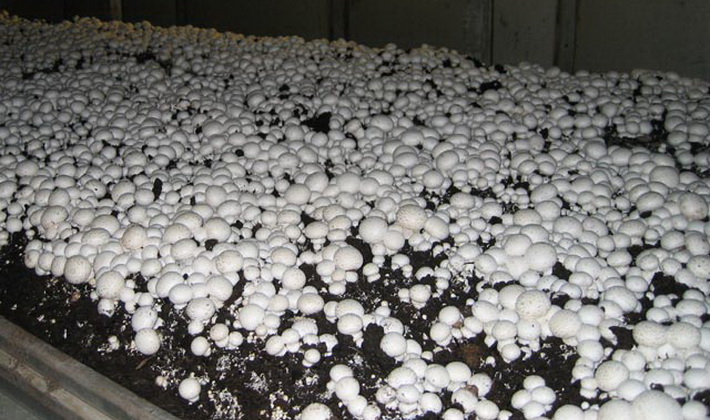
So, in champignon grown in a greenhouse, where an optimally favorable environment is formed, the growth of mycelium lasts 10-12 days, after which active fruiting continues for 5-7 days, followed by the growth of mycelium for 10 days. Then the cycle repeats again.
A similar rhythm is also found in other cultivated mushrooms: winter mushroom, oyster mushroom, ringworm, and this cannot but affect the technology of their breeding and the specifics of caring for them.
The most obvious cyclical nature is observed when mushrooms are cultivated indoors under controlled conditions. In open ground, weather conditions have a decisive influence, due to which the fruiting layers can move.
Next, you will find out what type of nutrition mushrooms have and how this process occurs.
How does the process of nutrition of mushrooms: characteristic types and methods
It is difficult to overestimate the role of mushrooms in the general food chain of the plant world, since they decompose plant debris and thereby actively participate in the constant circulation of substances in nature.
The decomposition of complex organic substances, such as fiber and lignin, are the most important problems in biology and soil science. These substances are the main components of plant litter and wood. By their decay, they determine the cycle of carbon compounds.
It has been established that 50-100 billion tons of organic substances are formed on our planet every year, a large part of which are plant compounds. Every year in the taiga region, the level of litter varies from 2 to 7 tons per 1 ha, in deciduous forests this number reaches 5-13 tons per 1 ha, and in meadows - 5-9.5 tons per 1 ha.
The main work on the decomposition of dead plants is carried out by fungi, which nature has endowed with the property of actively destroying cellulose. This feature can be explained by the fact that fungi have an unusual way of feeding, referring to heterotrophic organisms, in other words, to organisms that lack an independent ability to convert inorganic substances to organic.
In the process of nutrition, mushrooms have to absorb ready-made organic elements produced by other organisms. Just this is the main and most important difference between fungi and green plants, which are called autotrophs, i.e. self-forming organic matter using solar energy.
By type of nutrition, mushrooms can be divided into saprotrophs, which live due to the fact that they feed on dead organic substances, and parasites that use living organisms to obtain organic substances.
The first type of mushroom is quite diverse and very widespread. They include both very large fungi - macromycetes, and microscopic - micromycetes. The main habitat of these fungi is the soil, which contains almost countless spores and mycelium. No less common are saprotroph mushrooms growing in the forest turf.
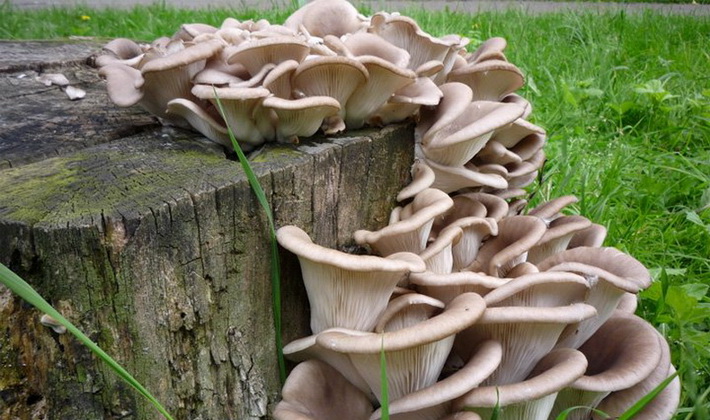
Many species of mushrooms, called xylotrophs, chose wood as their place of residence. These can be parasites (autumn honey agarics) and saprotrophs (ordinary tinder fungus, summer honey agarics, etc.). From this, by the way, we can conclude about why it is not necessary to plant winter honeybees in the garden, in the open ground. Despite its weakness, it does not cease to be a parasite that can infect trees in a plot in a short time, especially if they are weakened, for example, by an unfavorable wintering. Summer honey agaric, like oyster mushroom, is completely a saprotroph, therefore it can not harm living trees, growing only on dead wood, so you can safely transfer the substrate with mycelium from the room into the garden under the trees and shrubs.
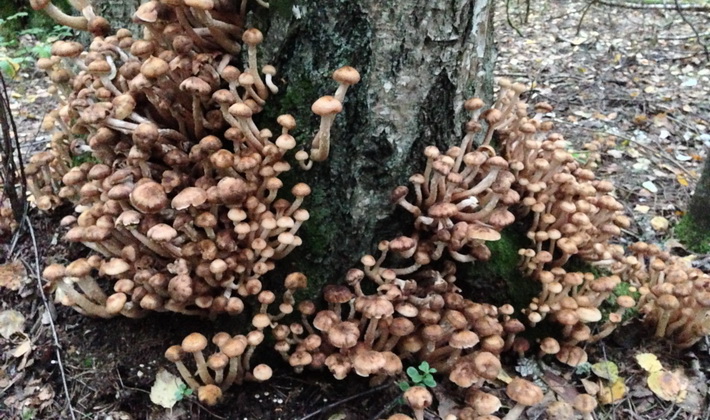
Autumn mushroom, popular among mushroom pickers, is a real parasite that seriously harms the root system of trees and shrubs, causing root rot. If you do not take any preventive measures, then the mushrooms that find themselves in the garden can only destroy the garden for several years.
Water after washing the mushrooms should never be poured in the garden, unless in a compost heap. The fact is that there are many spores of the parasite in it and, having penetrated the soil, they are able to get to the vulnerabilities of trees from its surface, than cause their disease. An additional danger of autumn honey agaric is that under certain conditions the fungus can be a saprotroph and live on dead wood until the opportunity arises to get onto a living tree.
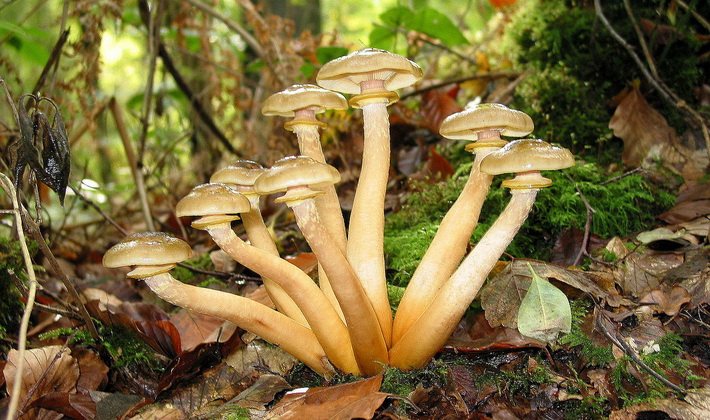
Autumn honey agarics can also be found on the soil next to the trees. The filamentous stamens of this parasite are closely intertwined into the so-called rhizomorphs (thick black-brown strands), which are able to spread underground from tree to tree, braiding their roots. As a result, mushrooms infect them on a large area of the forest. At the same time, on the cords developing underground, the fruiting bodies of the parasite are formed.Due to the fact that it is located at a distance from the trees, it seems that the honey agarics grow on the soil, however, its cords in any case have a connection with the root system or tree trunk.
When breeding autumn honey agaric, it is necessary to take into account how these mushrooms are nourished: during their life spores and parts of the mycelium accumulate, and if they exceed a certain threshold, they can cause infection of trees, and no precaution will help here.
As for mushrooms such as champignon, oyster mushroom, donut, they are saprotrophs and do not pose a threat when growing them on open ground.
The above also explains why it is extremely difficult to plant valuable forest mushrooms under artificial conditions (porcini mushroom, boletus, saffron mushroom, butterdish, etc.). The mycelium of most cap mushrooms binds to the root system of plants, in particular trees, resulting in the formation of fungus root, i.e. mycorrhiza. Therefore, such mushrooms are called "mycorrhizal".
Mycorrhiza is one of the types of symbiosis that is often found in many fungi and until recently remained a mystery to scientists. Symbiosis with mushrooms can create the majority of woody and herbaceous plants, and the mycelium in the ground is responsible for such a connection. It grows together with the roots and forms the conditions necessary for the growth of green plants, at the same time receiving ready-made nutrition for both itself and the fruiting body.
Mycelium envelops the root of a tree or shrub with a dense cover, mainly on the outside, but partially penetrates inside. The free branches of the mycelium (hyphae) branch off from the cover and, diverging in different directions in the ground, replace the root hairs.
Due to the special nature of nutrition, with the help of hyphae, the fungus sucks water, mineral salts and other soluble organic substances from the soil, mostly nitrogenous. A certain amount of such substances gets to the root, and the rest goes to the fungus itself for the development of mycelium and fruiting bodies. In addition, the root provides carbohydrate nutrition to the fungus.
For a long time, scientists could not explain the reason why the mycelium of most cap forest mushrooms does not develop if there are no trees nearby. Only in the 70s. XIX century it turned out that mushrooms not only tend to settle near trees, for them this neighborhood is extremely important. The scientifically confirmed fact was reflected in the names of many mushrooms - aspen boletus, podolynanik, sowing, boletus, etc.
Mycelium of mycorrhizal fungi penetrates forest soil in the root zone of trees. For such mushrooms, symbiosis is vital, because if the mycelium can still develop without it, but the fruiting body is unlikely.
Previously, they did not attach much importance to the characteristic way of feeding mushrooms and mycorrhiza, which led to numerous unsuccessful attempts to grow edible forest fruit bodies in artificial conditions, mainly boletus, which is the most valuable of this variety. The porcini mushroom can enter into a symbiotic relationship with almost 50 species of trees. Most often in Russian forests there is a symbiosis with pine, spruce, birch, beech, oak, hornbeam. At the same time, the type of tree species with which the fungus forms mycorrhiza affects its shape and the color of the cap and legs. A total of approximately 18 forms of cep. The color of the hats ranges from dark bronze to almost black in oak and beech forests.
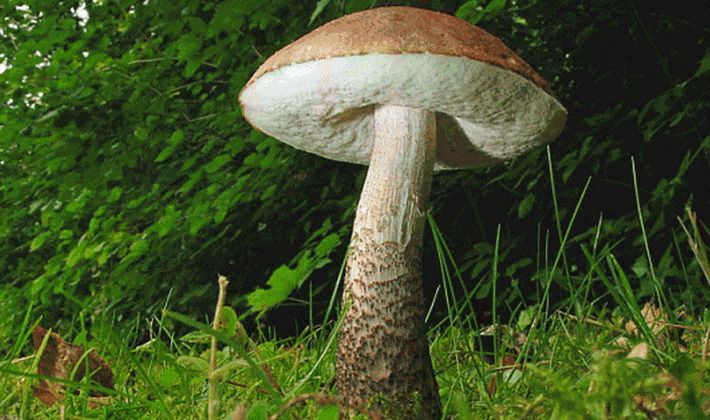
The birch bark forms mycorrhiza with certain types of birches, including dwarf, which occurs in the tundra. There you can even find birch trees, which are much larger than the birches themselves.
There are mushrooms that come into contact only with a particular tree species. In particular, larch oiler creates a symbiosis exclusively with larch, which is reflected in its name.
For the trees themselves, such a connection with mushrooms is of considerable importance. Judging by the practice of planting forest strips, it can be said that without mycorrhiza, trees grow poorly, become weak and undergo a variety of diseases.
Mycorrhizic symbiosis is a very complex process. Such relationships of fungi and green plants are usually determined by environmental conditions. When the plants are undernourished, they “eat” partially processed branches of the mycelium, the mushroom, in turn, experiencing “hunger”, begins to eat the contents of the root cells, in other words, resorting to parasitism.
The mechanism of symbiotic relationships is quite subtle and very sensitive to external conditions. Probably, it is based on the usual for fungi parasitism on the roots of green plants, which during a long evolution turned into a mutually beneficial symbiosis. The earliest known cases of mycorrhiza of woody species with fungi were found in the Upper Carboniferous sediments of about 300 million years old.
Despite the difficulties of growing forest mycorrhizal fungi, it still makes sense to try to breed them in summer cottages. It will be possible to do this or not, it depends on various factors, therefore it is impossible to guarantee success here.
